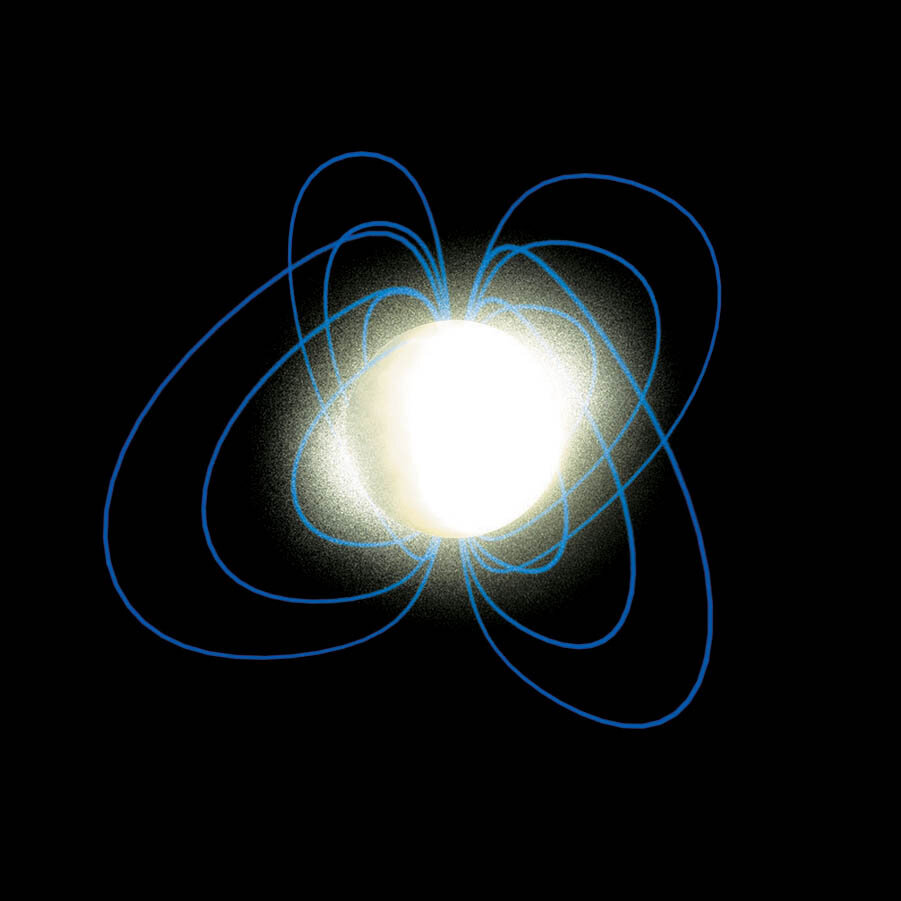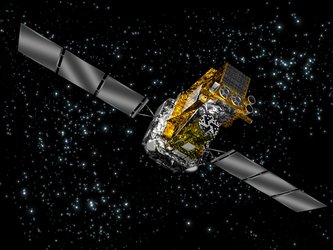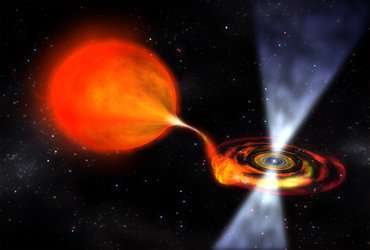The densest objects in the Universe
When a massive star explodes, not all the material is ejected into space. Some of it collapses into an extremely compact object known as a neutron star, inside which gravitational forces crush protons and electrons together, turning them into particles known as neutrons.
A neutron star contains a few solar masses of material squeezed into a radius of only 20 km. This means the matter is so compressed that a thimble full of it would weigh millions of tonnes on Earth. Fast-spinning neutron stars, whose radio emissions seem to pulse on and off, are called pulsars.

Beyond the mass limit of a neutron star – about three solar masses – gravity becomes overwhelming and collapses the star even further, creating a black hole. These are perhaps the strangest objects in the Universe because nothing, not even light, can escape from inside a black hole. So, the presence of a black hole can only be inferred by its effect on surrounding celestial objects and other interstellar material.
Virtually all types of compact objects are significant sources of high-energy emission because of the enormous gravitational fields they tend to generate. Gravitational fields can accelerate particles in the vicinity to extreme velocities, which then emit gamma rays and X-rays.
Integral is capturing images of the high-energy emission from such compact objects with unprecedented detail, allowing astronomers a clearer look than ever before at these enigmatic objects.















 Germany
Germany
 Austria
Austria
 Belgium
Belgium
 Denmark
Denmark
 Spain
Spain
 Estonia
Estonia
 Finland
Finland
 France
France
 Greece
Greece
 Hungary
Hungary
 Ireland
Ireland
 Italy
Italy
 Luxembourg
Luxembourg
 Norway
Norway
 The Netherlands
The Netherlands
 Poland
Poland
 Portugal
Portugal
 Czechia
Czechia
 Romania
Romania
 United Kingdom
United Kingdom
 Slovenia
Slovenia
 Sweden
Sweden
 Switzerland
Switzerland






























